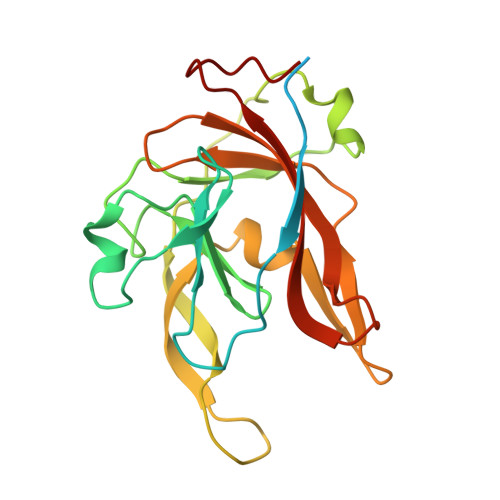Bacteroides fragilis expresses three proteins similar to Porphyromonas gingivalis HmuY: Hemophore-like proteins differentially evolved to participate in heme acquisition in oral and gut microbiomes.
Antonyuk, S.V., Sieminska, K., Smiga, M., Strange, R.W., Wagner, M., Barnett, K.J., Olczak, T.(2023) FASEB J 37: e22981-e22981
- PubMed: 37246607
- DOI: https://doi.org/10.1096/fj.202300366R
- Primary Citation of Related Structures:
8B61, 8B6A - PubMed Abstract:
Oral and gut microbiomes are important for the maintenance of homeostasis in the human body. Altered or disturbed mutualism between their members results in dysbiosis with local injury and subsequent systemic diseases. The high bacterial density causes intense competition among microbiome residents to acquire nutrients, including iron and heme, the latter of high importance for heme auxotrophic members of the Bacteroidetes phylum. Our main hypothesis is that the heme acquisition mechanism, with the leading role played by a novel HmuY family of hemophore-like proteins, can be used to fulfill nutritional requirements and increase virulence. We characterized HmuY homologs expressed by Bacteroides fragilis and compared their properties with the first representative of this family, the HmuY protein of Porphyromonas gingivalis. In contrast to other Bacteroidetes members, B. fragilis produces three HmuY homologs (Bfr proteins). All bfr transcripts were produced at higher levels in bacteria starved of iron and heme (fold change increase ~60, ~90, and ~70 for bfrA, bfrB, and bfrC, respectively). X-ray protein crystallography showed that B. fragilis Bfr proteins are structurally similar to P. gingivalis HmuY and to other homologs, except for differences in the potential heme-binding pockets. BfrA binds heme, mesoheme, and deuteroheme, but preferentially under reducing conditions, using Met175 and Met146 to coordinate heme iron. BfrB binds iron-free protoporphyrin IX and coproporphyrin III, whereas BfrC does not bind porphyrins. HmuY is capable of heme sequestration from BfrA, which might increase the ability of P. gingivalis to cause dysbiosis also in the gut microbiome.
Organizational Affiliation:
Molecular Biophysics Group, Institute of Systems, Molecular and Integrative Biology, Faculty of Health and Life Sciences, University of Liverpool, Liverpool, UK.
















